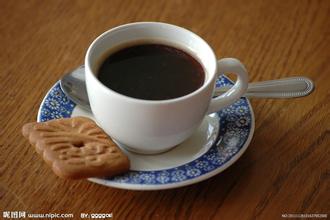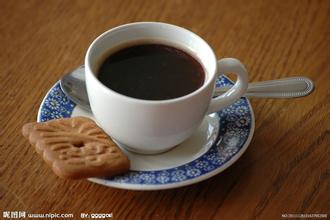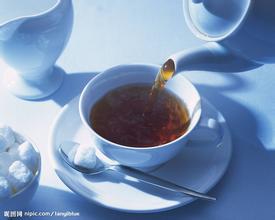Introduction to Bali Coffee Coffee Flavor
Only about 150 grams of coffee beans can be extracted from a catty of civet feces, and 20% of the coffee beans will be lost during the roasting process. Due to the unique raw materials and production process, this coffee can be said to be very rare, and the annual supply of coffee beans worldwide will not exceed 400 kilograms at most.
Traditionally, coffee fruit is washed or sun-dried to remove excess parts and extract coffee beans, but Luwak obtains coffee beans by using its natural fermentation in the body of the civet, thus having a unique flavor.
Coffee beans generally go through the process of fermentation of the shell. Coffee beans are in the intestinal tract of the civet. Special bacteria provide a unique fermentation environment. The flavor becomes unique and especially thick and mellow. Coffee beans fermented by civet intestines are especially thick and fragrant.
Eva, the owner of Te Cafe, is a coffee enthusiast who travels around the world every year to collect rare products. She told reporters that "cat poop coffee" was once a tribute from Indonesia to the Dutch royal family. At that time, the industry regarded this coffee with the name "cat poop" as a joke, until National Geographic magazine carried a special report on this, everyone gradually became interested in this "cat poop coffee".
Folding is expensive
"Cat poop coffee" is the world's least produced coffee, a bag of 50 grams of coffee beans worth more than 800 yuan, only 4- 5 cups of coffee. In terms of conversion, a cup sells for about 200 yuan. Indonesia's largest coffee supplier, Fireboat Group, produces a small gift box of civet coffee for 600 yuan and 50 grams. The packaging is extremely luxurious, while the asking price of 100 grams is more than 2000 yuan. The annual output of wild coffee in the world does not exceed 400 kilograms. Villagers in these areas now collect not only wild ruaka waste but also caged ruaka. Large pots of picked coffee cherries were placed in front of Ruwaka, who was hungry and had no choice but to eat all the coffee cherries. The taste of the coffee produced in this way is naturally greatly discounted. "Rare is expensive", which has led to the high price of Kopi Luwak, a rare treasure. I'm afraid you can prepare 50 pounds for a cup of coffee, and you may not find it anywhere.
A cup of coffee made from 12 grams of cat feces coffee powder sponsored by Huochuan Group at the 2010 Shanghai World Expo was 380 yuan, and the daily limit of 12 cups was in short supply.
In Bali, a cup costs more than 200,000 Indonesian rupiah, equivalent to more than RMB 150.
In the United States, 1 kg of cat poop coffee beans goes up to USD 1200. It is always around USD 1000 on the international market.
In Britain, a glass costs 50 pounds (RMB 500).
"Civets" are omnivores. They are solitary and nocturnal. They inhabit tropical rain forests, subtropical evergreen broad-leaved forests, mountain shrubs or hills, mountains, grass and other places below 2000 meters above sea level. Its food includes small mammals, birds, amphibians and reptiles, crustaceans, insects and plant fruits, seeds and so on. "Civet" likes to choose the most ripe, sweet, full and juicy coffee fruit in the coffee tree as food, and the coffee fruit passes through its digestive system, only the pulp of the fruit is digested, and the hard coffee beans are then excreted intact by the "civet" digestive system. This is the "natural fermentation method" that was once scorned by Americans. It is said that when Americans heard that there was a way to make coffee in this way, they thought it was a fantasy until it was reported by National Geographic magazine.

Important Notice :
前街咖啡 FrontStreet Coffee has moved to new addredd:
FrontStreet Coffee Address: 315,Donghua East Road,GuangZhou
Tel:020 38364473
- Prev

Introduction of Guatemalan Coffee Flavor Fine Coffee from Guatemalan Coffee producing area
In Guatemala, it is famous for producing high-quality beans, which is the highest elevation and dry climate in the coffee growing area of the country. Located in a rare non-volcanic area in China and the United States, the mountains are potholed and the terrain is very dangerous. Although the elevation is nearly 2000 meters, the warm, dry air from the plains of Mexico protects coffee trees in this area from frost.
- Next

Introduction of Mexican Coffee Flavor Mexican Coffee Manor introduces Mexican Fine Coffee beans
After the workers picked the coffee beans, they spread the coffee beans in a special house with ventilation on all sides. About a week later, the coffee beans were packed in loosely packed bags so that the wind could blow through the bags. After about seven weeks, the coffee beans changed color and taste. Finally, these coffee beans are selected manually, and the coffee beans of high quality are selected and officially bagged for preservation. Aldumara coffee beans
Related
- Detailed explanation of Jadeite planting Land in Panamanian Jadeite Manor introduction to the grading system of Jadeite competitive bidding, Red bid, Green bid and Rose Summer
- Story of Coffee planting in Brenka region of Costa Rica Stonehenge Manor anaerobic heavy honey treatment of flavor mouth
- What's on the barrel of Blue Mountain Coffee beans?
- Can American coffee also pull flowers? How to use hot American style to pull out a good-looking pattern?
- Can you make a cold extract with coffee beans? What is the right proportion for cold-extracted coffee formula?
- Indonesian PWN Gold Mandrine Coffee Origin Features Flavor How to Chong? Mandolin coffee is American.
- A brief introduction to the flavor characteristics of Brazilian yellow bourbon coffee beans
- What is the effect of different water quality on the flavor of cold-extracted coffee? What kind of water is best for brewing coffee?
- Why do you think of Rose Summer whenever you mention Panamanian coffee?
- Introduction to the characteristics of authentic blue mountain coffee bean producing areas? What is the CIB Coffee Authority in Jamaica?

